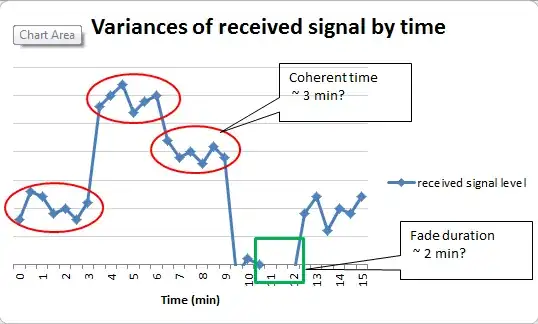This question was asked in Electrical Engineering 2 days ago but hasn't received very informative responses. https://electronics.stackexchange.com/questions/387255/decide-coherent-time-and-fade-duration-through-empirical-studies-on-the-channel
I. Scenario: - TX floating in the lossy heterogeneous medium (a mud-like fluid mixed with leaves and small rocks) with undetermined positions within a limited region; - RX fixed in the air and closed to the boundary of air-lossy medium; - Frequency 500 MHz
II. The study: - The received signal level was recorded every 30 seconds for 30 minutes and sometimes no signal could be detected for a while. The measurement was repeated several times.
III. Results:
An example of the received signal spectrum is as below.

Questions:
- Can I assume 3 minutes to be the coherent time of the channel?
- Can I assume the no-signal period to be fade duration?
- How to model the channel when the TX-RX distance was not stable? Can I develop a model for the changes of received signal against time?